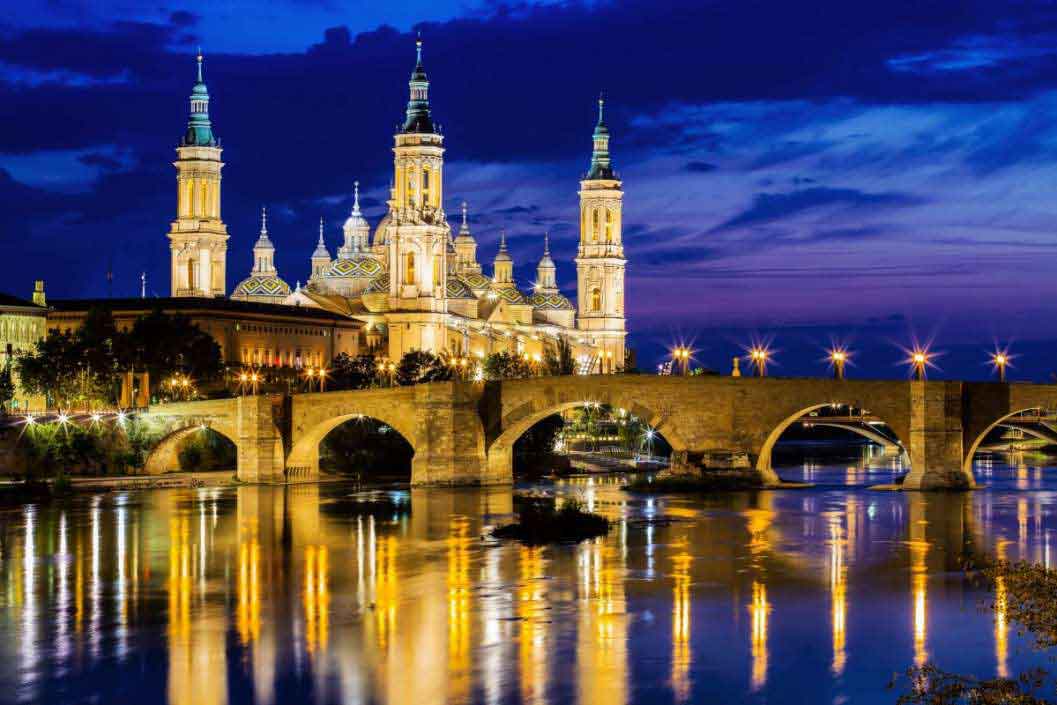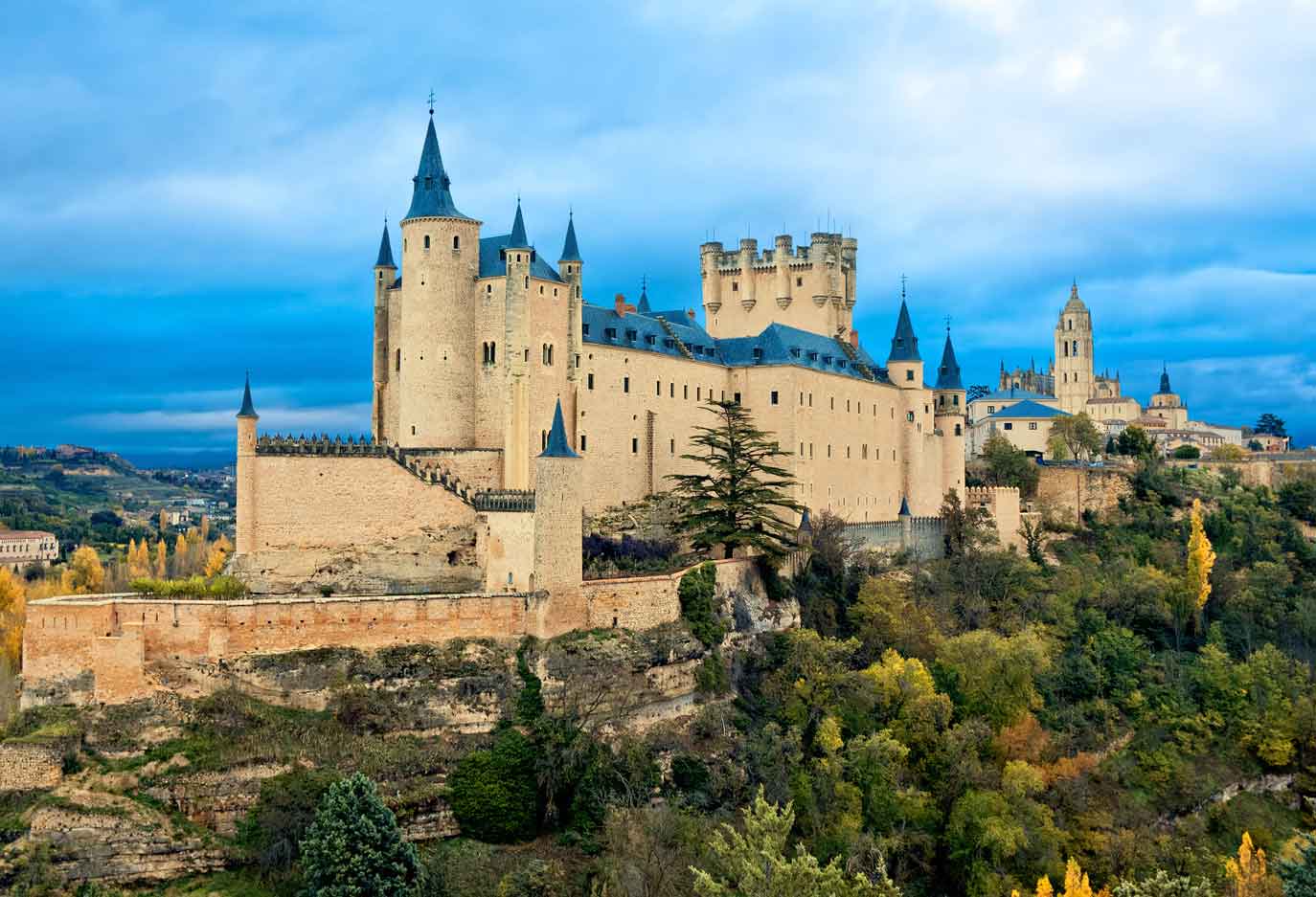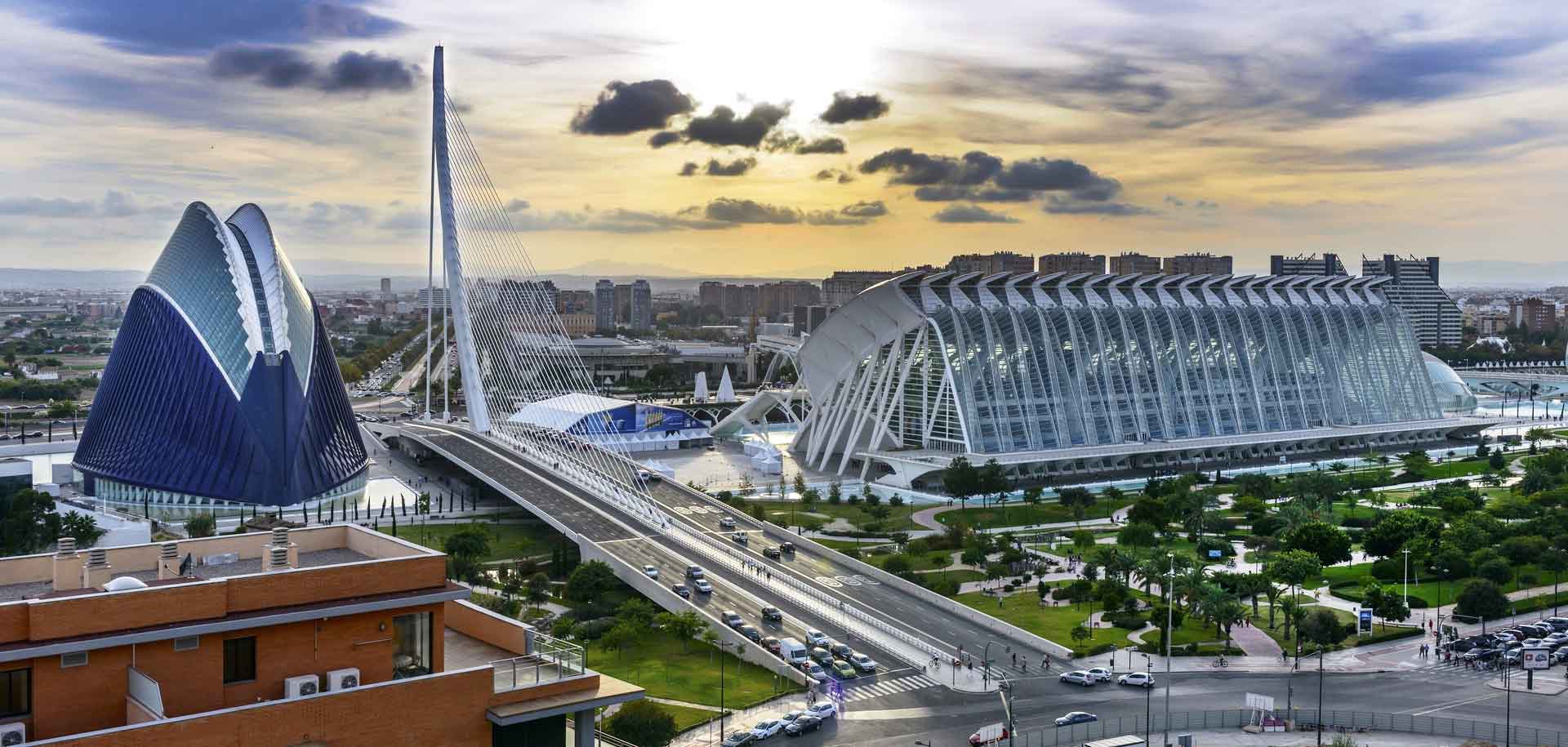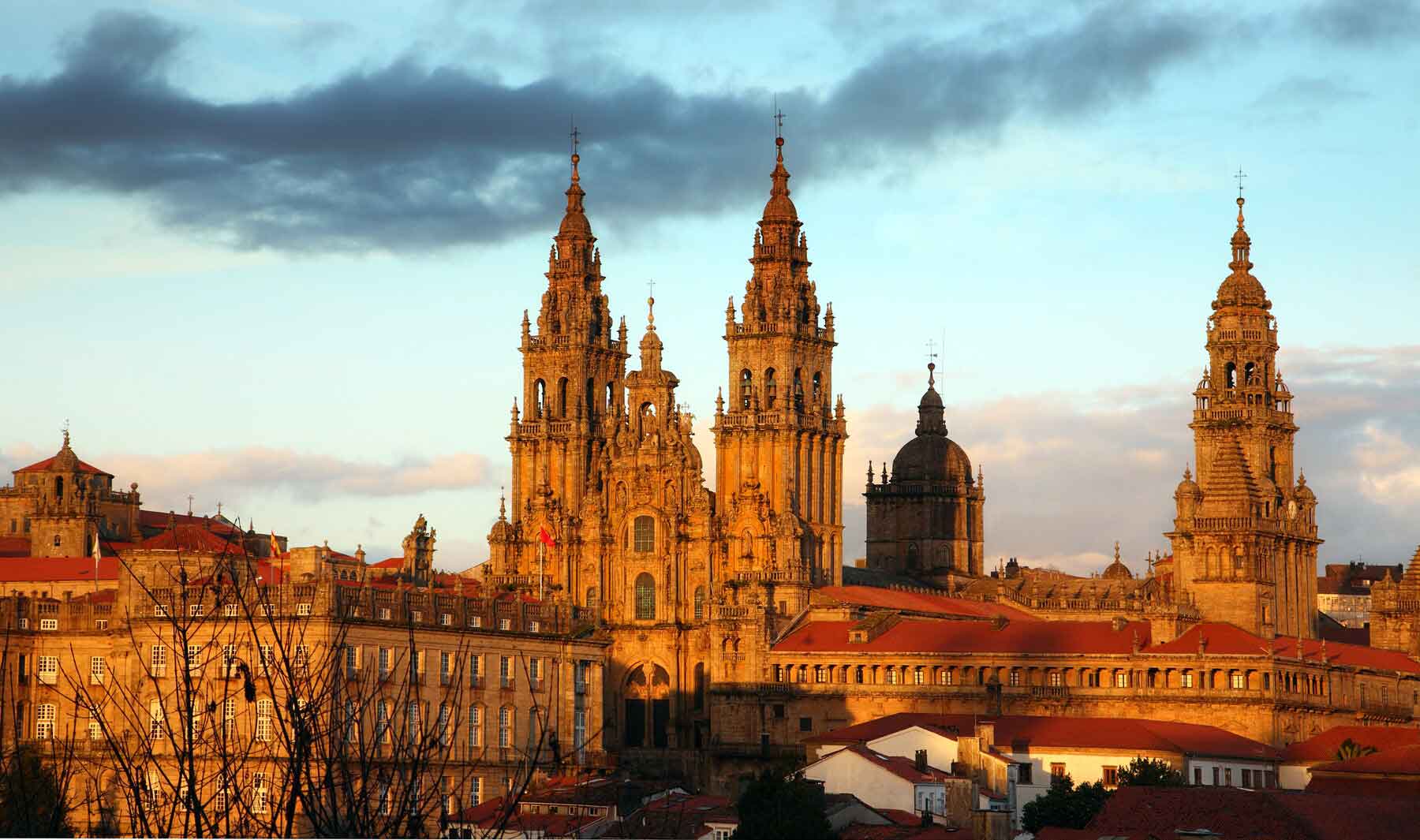Visit Spain through Erasmus+ KA1 for school education staff
To come to Spain is to feel the experience of traveling through its history, whether visiting its towns and cities, or traveling through its territory admiring its diverse landscapes. But, above all, you will be amazed by its people, who over the centuries have left us one of the greatest artistic legacies in the world. Visiting its cities, besides discovering impressive monuments and charming places, you will feel the friendly and cheerful character of its people. To travel to Spain is also to enjoy its authentic and varied gastronomy, its traditions and festivals, shows and nature trails.
Visit Spain through Erasmus+ KA1 for school education staff
Come to Spain through Erasmus+ KA1 for school education staff to participate in one of our Erasmus+ courses, and you will have one of the best experiences of your life.
Spain is always waiting for you with open arms
Spain is one of the largest countries in Europe with just over half a million square kilometres and also one of the most mountainous. Its Spanish language or Castilian is one of the most widely spoken languages in the world. Spain is one of the countries with the most World Heritage Sites. You can come to Spain with peace of mind, as its health care system, life expectancy, street safety and human development index are among the best in the world. Nowadays, Spain is also a multicultural country used to receiving travellers and tourists, being one of the most visited countries in the world, so it has the necessary infrastructures to host twice its population in visitors every year.
Spain is unique and at the same time very diverse
It should be borne in mind that Spain has not only been a place of settlement for many peoples of very diverse cultures for millennia, but has also suffered the invasion of the great empires of antiquity, one after the other and even coexisting with several of them at the same time. The Phoenicians, Iberians, Celts, Romans, Arabs and Visigoths, among others, all passed through Spain. That is why there are so many different regions in Spain today, not only in the character of their people, but also in their different languages and customs.
The gastronomy of Spain, a privilege for your senses
Spain’s gastronomy and Mediterranean diet are the healthiest in the world and, best of all, affordable for all budgets. All the visitors always say the same thing: apart from the fact that Spain is a great place to eat, the dishes are plentiful and cheap. Tapas, Valencian paella, Spanish potato omelette, Iberian ham, Andalusian gazpacho, Madrid style callos, Málaga sardines espetos, Extremadura style migas , Asturian fabada, Bilbaina cod, Galician style octopus, Catalán fuet, Manchego cheeses, and many more world-renowned dishes reflect how varied, healthy and creative Spanish cuisine is. The key? Extra virgin olive oil. And in haute cuisine, the best chefs in the world and the restaurants with the most Michelin stars are Spanish for a reason. And what about Spanish wine? Among the best wines in the world are Spanish like: Rioja, Ribera del Duero, Albariño, Moscatel, Jerez, Manzanilla, Valdepeñas, Asturian cider, Catalan Cava, etc. And yet, if you want to buy the best wine at the best price, you can do so in Spain. In short, Spanish gastronomy is a symbol of high quality and is always within everyone’s reach.
Spain's climatic variety, its natural contrasts and its amazing landscapes
Spain is a country located in the extreme south of Europe suffering from southern Atlantic currents together with other warm currents coming from Africa. It is also located between the Atlantic Ocean and the Mediterranean Sea, something that no other European country has at this level. This makes that, being, in addition, in a temperate strip around the 40th parallel, enjoy the four seasons in a well differentiated way. Northern Spain is green, colder and rainy, typical of the Atlantic climate. The central plateau has a more continental climate with more extreme temperatures. On the contrary, the south and the Mediterranean coast offer a strong heat in summer, but softened by the proximity of the Mediterranean Sea, which makes it one of the best climates in the world, around which the largest and most important civilizations have developed since we have historical awareness thousands of years ago.
Madrid, the capital of Spain
Madrid, the great capital of Spain, is the most visited city in the country. Situated in the centre of the Spanish geographic centre, it is always worth a visit. It is a metropolis of more than 6 million inhabitants that has a great cultural, leisure and gastronomic offer all year round. The biggest Spanish shows, concerts, fairs, exhibitions and sporting events are held in Madrid. It is one of the cities with the largest number of museums in the world. Places to visit include the Puerta del Sol, the Plazas de España and Cibeles, the Royal Palace, the Prado Museum, the Puerta de Alcalá and the shopping streets of Serrano and Gran Vía. If we want to visit its most modernist area, with its skyscrapers or the great Santiago Bernabeu Stadium owned by Real Madrid, the most successful football club in the continent with more than 13 European champions League cups, we must go to Paseo de la Castellana.
Barcelona, original and cosmopolitan
The Catalan capital is, together with Madrid and the Alhambra in Granada, one of the most visited destinations in Spain. Barcelona is the second city of Spain with more than 3.500.000 inhabitants, although it is the centre of an area of influence in the province of more than 5 million people, surrounded by large cities. Its two most important attractions are not antiquities hundreds or thousands of years old as in other Spanish cities, although it has them. On the one hand, we have its “endless” Basilica of the Sagrada Familia, the work of the brilliant Gaudí, which, once finished, will be the tallest catholic temple in the world with unique shapes and structural whims in the world. The grandiose Camp Nou stadium with a capacity for 100,000 people and the Barcelona Football Club museum is the other most visited “monument” in the city. But Barcelona is also full of history, museums, palaces, grand avenues of modern buildings, the largest cruise port in Spain and a very special atmosphere in its streets.

Zaragoza, of Iberian origin and capital of the Region of Aragon
Zaragoza, on the banks of the Ebro River, the mighty river in Spain, is a large city with almost 700,000 inhabitants that dates back to the Bronze Age, more than three thousand years ago. It was very important during the Hispania of the Roman Empire, when the Caesar-Emperor Octavian Augustus took possession of it from the Iberians who settled there, and it became known as Caesar-Augusta, hence its present name of Zaragoza. The most important area of the city is the group of museums, monuments and streets annexed to the great Cathedral Basilica of Nuestra Señora del Pilar. Attached to the Plaza de las Catedrales is the Catedral del Salvador. Also of great interest are the Town Hall, the Lonja de Mercaderes and the sculpture of the universal painter Francisco de Goya, as well as the Church of San Juan de los Panetes.

Toledo, capital of Castile-La Mancha
Blending into the horizon with the landscape and standing on a mountain surrounded by one of the meanders of the Tajo River, Toledo is without a doubt a monumental city of dreams, a World Heritage Site. It is a medieval relic full of castles, armour and walls, which together with the swords form part of its symbols and shields. Cradle of the history of the mills of Don Quixote, of one of the most extreme painters of Mannerism, El Greco, and of a long list of works of art and monuments from Roman, Arab and Christian times for more than two millennia. The great Cathedral and the Military Alcazar should not be missed. Toledo is full of museums such as El Greco, Santa Cruz and the Duke of Lerma. The churches also contain artistic treasures such as those of Santo Tomé with the spectacular painting of the Burial of Count Orgaz or the Monastery of San Juan de los Reyes.
Other great destinations to visit in Spain
The following cities are, along with many others, a fundamental part of Spain and its soul. Valladolid, Salamanca, Cádiz, Burgos, Bilbao, Pamplona, San Sebastián, Oviedo, Santander or the Andalusian cities of Malaga or Granada are just a few of them.

Segovia, medieval and Roman
Segovia is another of the architectural gems left by Spanish history to delight the senses of those who visit it for the first time. Although it is a World Heritage city, it is small, you will not be able to visit it in a day, as in addition to its extensive cultural and artistic offerings, you will not be able to resist staying in one of its old medieval restaurants, experts in roasts, after tasting its suckling pig or its grilled lamb and some of its exceptional wines. Strolling around the outside of the city or driving along the Eresma river will allow you to see the Alcázar castle crowning one end of the city, one of the most beautiful castles in the world. Walking along its Calle Real from the Roman Aqueduct, whose stones are only stacked up to almost 30 metres high, you can reach its Plaza Mayor and admire its beautiful Gothic Cathedral, among others such as the Casa de los Picos or the church of San Martín.

Valencia, origin of the famous Spanish "paella" and of the Fallas festival
Valencia is one of those cities that from the very first moment you realise that it is open to visitors because of its wide range of leisure activities. Its universally known Fallas, its main festival, is unique, as hundreds of large sculptures are burnt in many of its squares, the largest of which is known as the Cremà. Many of them are true works of art, which is why it is a World Heritage Site. You can also enjoy the vast space of avant-garde architecture of the City of Arts and Sciences and the Oceanographic Museum which has the largest aquarium in Europe. Other must-see places are the Cathedral with the Miguelete Tower and the Holy Chalice, or the Central Market Square, La Lonja de la Seda and the Barrio del Carmen. And if you want to get away from the hustle and bustle of its more than 800,000 inhabitants, you can go out to the beaches or stroll through the Albufera Natural Park.

Santiago de Compostela, destination of one of the most important pilgrimages in Europe.
Santiago de Compostela is the capital of the Autonomous Community of Galicia, in the northwest of Spain. Although it is not as big a city as Vigo or A Coruña, it is one of the oldest and has also been declared a World Heritage Site. Since the 9th century it has been a point of pilgrimage for the whole of European Christianity due to the tomb of the Apostle Santiago. The monumental complex of Santiago de Compostela is overwhelming, from its great Romanesque Basilica, to its university with more than 5 centuries, its many museums, monasteries, churches and streets. The festivities are many, especially during the Compostela Holy Year, when the “botafumeiro” is thrown and swung inside the cathedral during the Hymn of the Apostle, which is a huge censer of more than 60 kilos filled with smoking incense. Another of its jewels is its marine gastronomy, gathered in the Galician estuaries, where seafood and the best molluscs in the world will delight anyone. Some typical dishes are Galician-style octopus, Santiago cake and Queimada, a traditional liquor that is prepared and drunk on the spot.